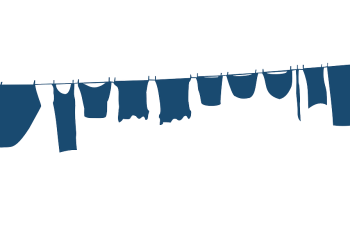Finding clothing that fits perfectly can be a challenge, especially when shopping off the rack. Ill-fitting garments can diminish your confidence and make even the most stylish pieces look unflattering. Fortunately, with some basic sewing skills and a few tools, you can make simple DIY alterations to ensure your clothes fit like they were tailored just for you. This guide explores common alterations and how to execute them effectively at home.
Why Alter Your Own Clothes?
- Customization: Adjust clothes to fit your unique body shape and size.
- Cost-Effective: Save money on professional tailoring services.
- Sustainability: Extend the life of your clothing by making it wearable.
- Creative Freedom: Experiment with styles and make old garments feel new again.
Essential Tools and Materials
Before you start altering your clothes, gather these tools:
- Sewing machine (optional but recommended)
- Hand sewing needles
- Thread (matching the garment color)
- Seam ripper
- Fabric scissors
- Pins or clips
- Measuring tape
- Chalk or fabric marker
- Iron and ironing board
Common Alterations and How to Do Them
1. Shortening Hems
Whether it’s a pair of pants, a skirt, or a dress, adjusting the hem length can make a huge difference in how a garment fits and flatters.
Steps:
- Measure and Mark: Try on the garment and use chalk to mark the desired length.
- Cut the Excess Fabric: Leave about an inch for the hem allowance.
- Fold and Pin: Fold the fabric under twice to create a clean edge and pin it in place.
- Sew the Hem: Use a straight stitch on a sewing machine or a hand-sewn slip stitch.
- Press the Hem: Iron the hem for a polished finish.
2. Taking in the Waist
If a garment feels too loose around the waist, this simple adjustment can improve its overall fit.
Steps:
- Mark the Excess Fabric: Wear the garment inside out and pin the excess fabric along the waistline.
- Remove the Seam: Use a seam ripper to open the waistband slightly.
- Sew the New Seam: Stitch along the pinned line, tapering the seam into the existing one.
- Reattach the Waistband: Fold and sew the waistband back into place.
- Trim and Press: Cut any excess fabric and iron the new seam.
3. Adjusting Sleeve Length
Long sleeves that are too long can be awkward and unflattering. Shortening them is a quick fix.
Steps:
- Mark the New Length: Try on the garment and mark where the sleeve should end.
- Cut and Fold: Trim the excess fabric and fold it under to create a new hem.
- Sew the Hem: Stitch the new hem using a straight or zigzag stitch.
- Finish and Press: Iron the sleeve for a professional look.
4. Tapering Pants
Baggy pants can be transformed into a sleek, tailored fit by tapering the legs.
Steps:
- Pin Along the New Seam: Try on the pants inside out and pin along the desired taper.
- Mark and Sew: Draw a line along the pins and sew along the line, starting at the crotch and tapering down to the ankle.
- Trim and Finish: Cut off the excess fabric and press the seam.
5. Fixing Gaping Necklines
A gaping neckline can make a top or dress feel uncomfortable and unflattering.
Steps:
- Pin the Excess Fabric: Pinch and pin the fabric along the neckline to remove the gap.
- Sew Darts: Sew small darts on each side of the neckline to bring it closer to your body.
- Press the Darts: Iron the darts flat for a seamless finish.
6. Adding Darts for Shape
Adding darts can transform a shapeless garment into a flattering, fitted piece.
Steps:
- Mark the Darts: Wear the garment and mark where the fabric needs to be taken in.
- Sew the Darts: Fold the fabric along the marked line and sew a triangular dart, tapering to a point.
- Press the Seams: Iron the darts toward the center of the garment.
Advanced Alterations
1. Replacing a Zipper
A broken zipper doesn’t mean the end of your favorite garment.
Steps:
- Remove the Old Zipper: Use a seam ripper to take out the damaged zipper.
- Align the New Zipper: Pin the new zipper in place.
- Sew the Zipper: Use a zipper foot on your sewing machine for precise stitching.
- Test the Zipper: Ensure it opens and closes smoothly.
2. Resizing a Garment
If a garment is too large, resizing can make it fit perfectly.
Steps:
- Mark the Adjustments: Wear the garment inside out and pin the excess fabric.
- Sew Along the Markings: Stitch along the pinned lines, ensuring symmetry.
- Trim and Finish: Cut away the extra fabric and press the seams.
3. Adding Elastic
Elastic can improve the comfort and fit of waistbands and cuffs.
Steps:
- Open the Seam: Create an opening in the waistband or cuff.
- Insert the Elastic: Thread the elastic through using a safety pin.
- Secure the Ends: Sew the elastic ends together and close the opening.
Tips for Successful Alterations
- Practice on Scrap Fabric: Test your skills before working on your favorite garments.
- Invest in Quality Tools: Sharp scissors, a sturdy seam ripper, and a reliable sewing machine make a big difference.
- Start Small: Begin with simple alterations and gradually tackle more complex projects.
- Measure Twice: Double-check measurements to avoid mistakes.
- Press as You Go: Ironing each step ensures a polished result.
Benefits of DIY Alterations
- Personalized Fit: Enjoy clothes that fit your body perfectly.
- Budget-Friendly: Save money by altering instead of buying new clothes.
- Sustainable Fashion: Reduce waste and extend the life of your garments.
- Creative Satisfaction: Gain confidence in your skills and showcase your handiwork.
DIY alterations empower you to take control of your wardrobe and create pieces that fit like a dream. With patience and practice, you can master these techniques and enjoy a closet full of perfectly tailored clothing.








